Search
Menu
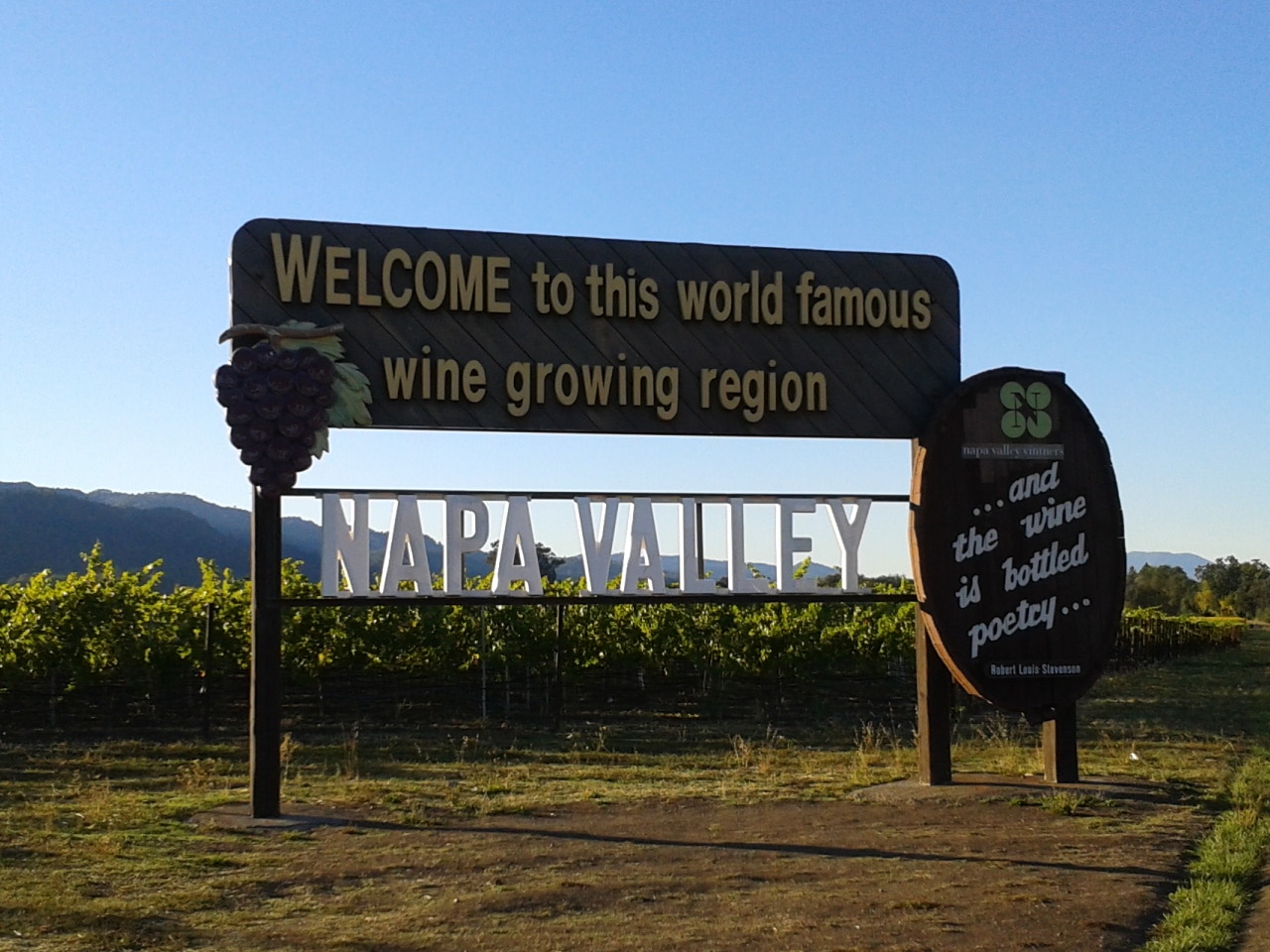
Bright January sun was illuminating the dormant vines and few cars were traveling up and down Route 29, which meant the views left and right were unobstructed. This is one of my favorite times of year to drive 29 and the Silverado Trail. With less tourists, you can creep along and take it all in. I never tire of it. This was the way it was on my drive up to Villa Ragazzi. I took my time.
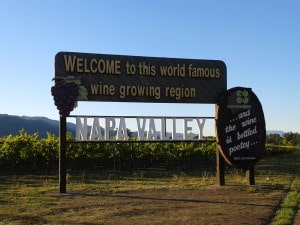 As I turned off the Oakville Cross Road and twisted my way into the vines, I realized I had been back in this section of Oakville a few years before, visiting a friend’s ranch. Yet I still buzzed right past the road I needed to turn onto to get to the property. As I turned around, a driver in a pickup tailing about 10 feet behind looked as confused as me; I didn’t feel so bad. Then I saw the bridge that is referenced coyly in the directions to the property: “Don’t worry about the bridge; cement trucks have crossed it safely.” As I rumbled across the wooden slats, I spied the house.
As I turned off the Oakville Cross Road and twisted my way into the vines, I realized I had been back in this section of Oakville a few years before, visiting a friend’s ranch. Yet I still buzzed right past the road I needed to turn onto to get to the property. As I turned around, a driver in a pickup tailing about 10 feet behind looked as confused as me; I didn’t feel so bad. Then I saw the bridge that is referenced coyly in the directions to the property: “Don’t worry about the bridge; cement trucks have crossed it safely.” As I rumbled across the wooden slats, I spied the house.
By now, I was five minutes late—all that gaping on 29 and then a wrong turn—so I hastily grabbed my notebook and hurried up to ring the bell. As I waited, I looked around, only to see a large bird laying on the front porch. Studying its upturned legs and rigor state, I verified it to be very dead. As my host opened the door and extended her arms to hug me, I blurted out, “You have a dead bird on your porch.” She still hugged me despite my brief lapse in social skills.
She let me in and we talked dead birds for a few minutes. She explained that because there is so much glass in the house, the birds often fly right into them, committing a wine country kind of suicide. I was not surprised to hear this—we have the same problem. All of a sudden, I will hear a huge thunk on our first-floor picture window and run to look, only to see a confused bird deliriously flying away in circles. There is often a lot of bird schmutz to be cleaned up on these windows. We also have their less daredevil brethren who land on the outdoor ledges of the smaller windows higher up and just sit there and peck, very methodically. I can’t decide which avian behavior I prefer, the Evel Knievel move or the lovesick tapping. I guess the lovesick tapping.
What does this have to do with Sangiovese? Nothing. But it was this open and honest way in which we kicked off our discussion that set the tone for the interview with Michaela Rodeno of Villa Ragazzi and her husband Greg, who joined us about halfway through. The name Villa Ragazzi—pronounced rah-gotz-ee and meaning “children” in Italian, or more colloquially “kids”— was inspired by the Rodenos’ two young children who were 3 and 5 when the Rodenos vinified their first vintage of Sangiovese in 1989.
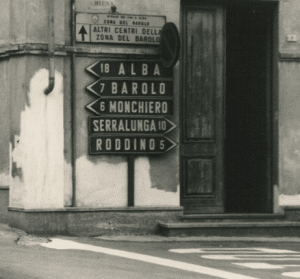 Although Villa Ragazzi’s wines are Tuscan inspired, Greg Rodeno’s roots are in the more northerly region of Piemonte. There is a village just 10 miles southeast of Barolo and only 3 miles from Monforte d’Alba bearing their name, albeit spelled Roddino. As with so many Italian-American names, the spelling got “amended” somewhere between the port of Livorno and Ellis Island.
Although Villa Ragazzi’s wines are Tuscan inspired, Greg Rodeno’s roots are in the more northerly region of Piemonte. There is a village just 10 miles southeast of Barolo and only 3 miles from Monforte d’Alba bearing their name, albeit spelled Roddino. As with so many Italian-American names, the spelling got “amended” somewhere between the port of Livorno and Ellis Island.
Here are my notes from the interview.
GB: I have read about Greg’s Italian heritage and his love of all things Italian; so, of all the Italian grape varieties out there, what made you want to go for Sangiovese?
MR: Well, we initially thought we would plant Nebbiolo, but in the meantime we visited Tuscany, hosted by Piero Antinori.
GR: Tuscany felt more like Napa and the trip gave me the mental necessity to plant Sangiovese.
Antinori’s fabulous hospitality sealed the deal, and they hatched a plan. For the record, Michaela said they had “a rockin’ good time” with the Antinoris. I can imagine; marchesi are notoriously great hosts. As the conversation kept circling back to our mutual love of all things Italian, we found we had a few other things (besides dead birds) in common. My husband Jack was a pilot and navigator and Greg has flown planes, too. I have a fondness for motorcycles, as does Greg. I still look longingly at sleek Harleys, but ended up buying a Yamaha Vino scooter (attracted by the wine-themed name, among other things); it was somewhat less impressive (and powerful) than Greg’s Ducati.
GB: Were you really the first to plant Sangiovese grapes in Napa, or would it be more accurate to say “some” of the first?
GR: Bob Pepi and I (playfully) debate this constantly. If we cannot prove that we were the first, we were certainly pioneers. We do believe ours was the first planting in the Napa Valley in 1985.
GB: Where did the Sangiovese come from?
MR: We don’t really know. We got the budwood some 30 years ago from a now-deceased winemaker friend in Sonoma from a vineyard for which no records were kept. The vineyard was planted in the typical Tuscan tradition, with mixed varieties, and our friend isolated some Sangiovese cuttings for us. We began informally calling ours the Rodeno clone. The distinguishing characteristics of this clone are that it has very low vigor and produces very low yields of small clusters with tiny dark berries.
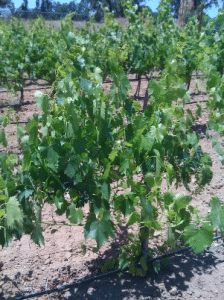
Did I mention that the Rodenos were very open and generous people? In addition to their warm, welcoming nature, they have been benefactors with this Sangiovese budwood as well. Since the late 1980s, they have given budwood to many local vintners and even to the Rhône-obsessed Randall Grahm. Because of its low tonnage, many have given up using this clone or use only small doses of it in their blends with other Sangiovese clones.
I remember attending a Cal-Ital event back in the mid-1990s, and I often wondered why Sangiovese never gained much of a stronghold in California, given that there are so many growers and producers of Italian descent. Today, roughly 35 wineries produce small quantities of a Sangiovese or Sangiovese-based wine in Napa Valley from a mere 264 acres (out of Napa’s total 45,000 acres)—just ½ percent of the acreage. There is a total of 1,894 acres of Sangiovese planted in the entire state. The answer to my wonderings about why the Sangiovese movement never really took off in California comes back to economics. Weak demand, lower bottle prices (than Cab, say), and a correspondingly low return on their land investment caused many producers to move away from the variety.
In another case of the Italian name-change game, there are those in California who refer to this clone as the Rodino clone. A quick search done by Greg revealed that those who call it Rodeno are mostly in Napa (e.g., Silverado, Long Meadow Ranch, Gargiulo, Krupp Brothers), while those who spell it Rodino are in the Santa Barbara / Santa Ynez area (Stolpman, Coquelicot, Foxen, and Fess Parker, to name a few). Michaela was also keen to point out that the Seghesio family has had Sangiovese over in Sonoma since the early 1900s when the current generation’s grandfather, a winemaker at the old Italian Swiss Colony winery in the late 1800s, planted a “Chianti” field blend that served as a source for subsequent plantings of Sangiovese.
After Michaela reviewed the descriptions of the numbered Sangiovese clones in the National Grape Registry, she began to suspect that what the UC Davis Plant Foundation Services calls “Clone 17” is in fact the Rodeno clone, again based on its low yield, low vigor, and small berries. None of the others listed really seemed to match these characteristics.
Recent vintages of the wine have garnered rave reviews from seasoned critics and tasters, including the likes of Hugh Johnson, Mary Ewing Mulligan, and Dan Berger, all proclaiming the Villa Ragazzi Sangiovese to be one of the greatest Sangioveses—perhaps the greatest—ever made in California. I asked the Rodenos what their flavor profile and style goals were when they planted their newly acquired vines, or if they just waited to see what the vineyard gave them?
They explained that at the time, both had other jobs—Michaela was vice president of marketing at Domaine Chandon, then became CEO of St. Supéry (you can read about her corporate life at both Napa Valley institutions in two books she has recently published); she’s now retired from there and splits her time between Villa Ragazzi, volunteering on boards, writing books, and consulting. Greg was practicing business, environmental, and real estate law (he still does). To begin with, there was only a tiny bit of Sangiovese planted among the Cabernet Sauvignon vines in their vineyard in Pope Valley. They sold the Cab and made minuscule amounts of Sangiovese (“a couple of buckets in 2007”) when they could find pickers willing to harvest the variety before it got too ripe on the vine.
This Pope Valley vineyard had very poor, rocky soils. Between 1980 when they bought the site and 2010 when they sold their interests in it to concentrate solely on their Oakville site, they routinely got less than 2 tons/acre, meager even by Old World standards. But this poor soil combined with the low-yielding, dark-berried Rodeno clone produced wines of great depth and exceptional color, with pure red berry fruit. The answer to my question, then, was that whatever their style goals might have been, it was site and clone that dictated the style of wine. Good for them for simply being too busy to manipulate the wine.
After the 2010 Pope Valley sale, the Rodenos’ first step was to replant their Oakville vineyard—which, while not hilly, is still quite rocky, according to Michaela. They are currently in the midst of this extensive replanting project, which will begin yielding a bit of Sangiovese in 2015, and they should be back in full estate production for Sangiovese by about 2019. While the transition from Pope Valley to Oakville progresses, they will fill in with Rodeno clone grower fruit. The wines have been made up on Atlas Peak at the Antica Estate, which is owned by Antinori—who are specialists in Sangiovese and the reason why the Rodenos fell in love with Sangiovese in the first place. Very appropriate.
The Rodenos are now ready to consolidate their brand around Sangiovese, and starting with the 2014 vintage, they will make three Sangiovese-based wines: Rosato, Sangiovese, and Faraona (a super-Tuscan-style blend of Sangiovese and Cabernet). They currently make a fourth, a Napa Valley Cabernet Sauvignon (100% varietal). Wines can be purchased here.
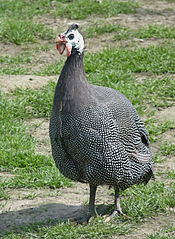 The day I visited, the Rodenos found themselves in a situation most wineries would like to be in: their wines have been so popular and they make so little that they were out of Sangiovese. What we did taste was the 2010 Faraona, their first vintage of this wine and the last from the original vineyard. Faraona (pronounced far-a-own-a) is Italian for guinea fowl, a game bird raised domestically in Europe. The Rodenos named this wine in honor of a memorable introduction to roast faraona served at Il Giardino da Felicin in Monforte d’Alba.
The day I visited, the Rodenos found themselves in a situation most wineries would like to be in: their wines have been so popular and they make so little that they were out of Sangiovese. What we did taste was the 2010 Faraona, their first vintage of this wine and the last from the original vineyard. Faraona (pronounced far-a-own-a) is Italian for guinea fowl, a game bird raised domestically in Europe. The Rodenos named this wine in honor of a memorable introduction to roast faraona served at Il Giardino da Felicin in Monforte d’Alba.
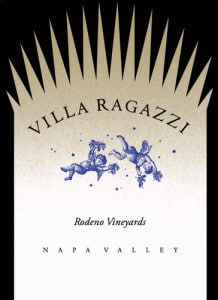 The sun was now shining into the room through the large glass windows, reflecting off the wine to highlight its garnet-jewel color—gleaming. My first whiff of this 75% Sangiovese and 25% Cabernet Sauvignon blend was alluring. All the fruits of Sangiovese in a medley—cranberry, cherry, and just-near-ripe raspberry swirled around in perfect harmony with an undercurrent of slaty minerality. As time went on, the characteristic violet hints of Sangiovese began to show themselves, a good sign to my mind. There were nuances of chocolate, cedar, and cassis, but it was still Sangiovese that was boss here—it’s a tough job tamping down Cabernet, but this little Rodeno clone can do it.
The sun was now shining into the room through the large glass windows, reflecting off the wine to highlight its garnet-jewel color—gleaming. My first whiff of this 75% Sangiovese and 25% Cabernet Sauvignon blend was alluring. All the fruits of Sangiovese in a medley—cranberry, cherry, and just-near-ripe raspberry swirled around in perfect harmony with an undercurrent of slaty minerality. As time went on, the characteristic violet hints of Sangiovese began to show themselves, a good sign to my mind. There were nuances of chocolate, cedar, and cassis, but it was still Sangiovese that was boss here—it’s a tough job tamping down Cabernet, but this little Rodeno clone can do it.
On the palate, the wine was just approaching full-bodied, and there were hints of oriental spice that came through. The most striking element of this wine is its seductive elegance. I found it perfectly balanced for the level of fruit and acidity the wine possesses.
Time had flown. I needed to get back out to 29 to beat the rush hour traffic—yes, I have quickly forgotten what a New York or DC rush hour is all about to the point where I think Highway 29 at 4:30 p.m. is crowded. I was lucky; the road was a bit backed up, but I inched my way out and merged into the flow. As I made my way south again, at a slow pace, the pitch-perfect fruit was still alive on the palate. I again started gaping at golden-lit vines and savored my memories of the Faraona. After all those years of writing tasting notes professionally and counting finishes, I can confidently say this wine had a long finish—the entire 18-minute drive home.
I can understand the interest in Sangiovese grapes considering the Mediterranean climate that we experience in the Bay Area. I wonder though why the Rodenos’ ended their search with the Chianti Clone never trying a Brunello Clone that is so prized in Tuscany.